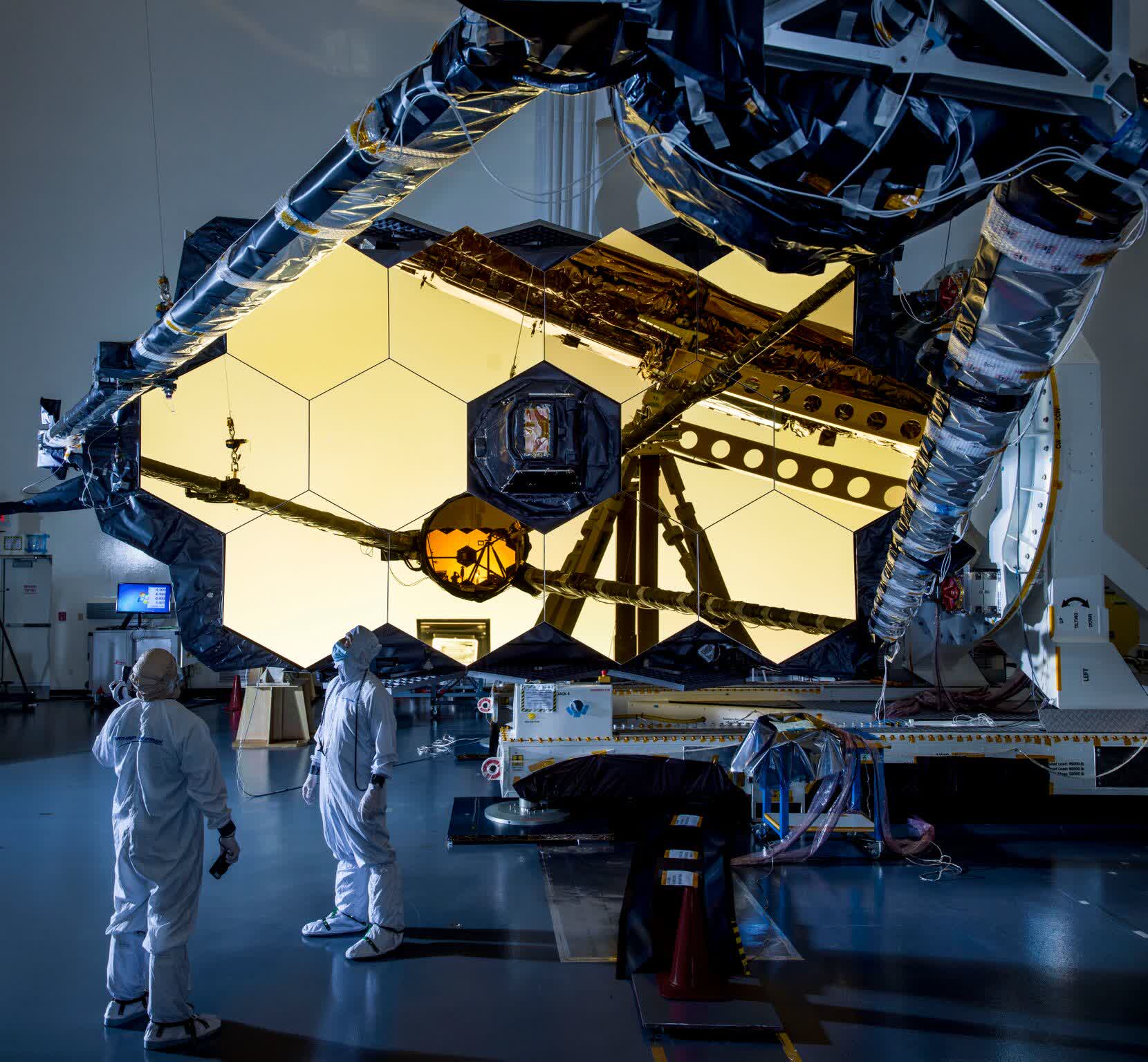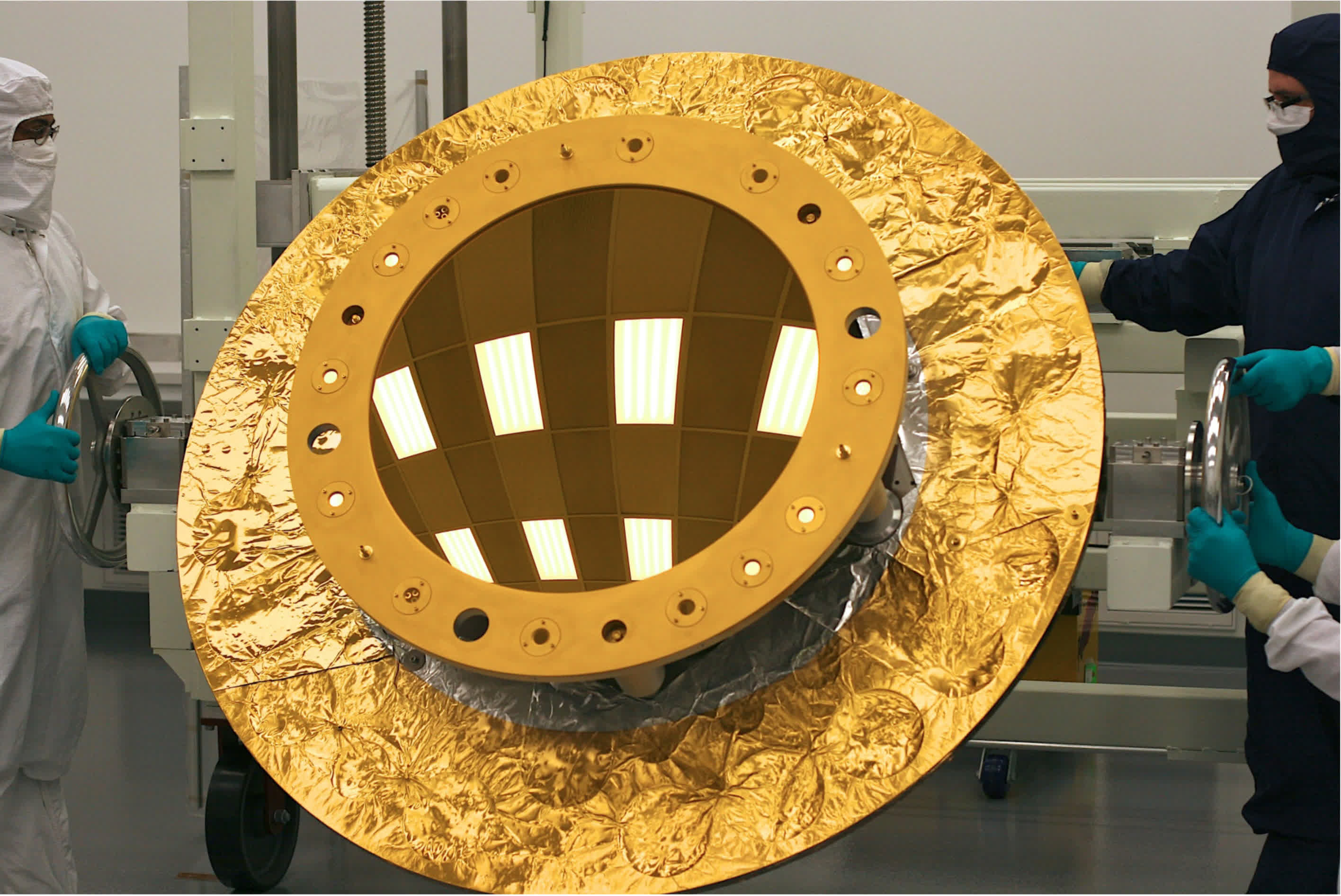James Webb Space Telescope completes risky sunshield deployment
In brief: The James Webb Space Telescope has successfully deployed its v-layer, 70-foot sunshield, checking off a critical make-or-suspension step in the observatory's multi-stage, post-launch prep equally information technology continues its journey towards the L2 insertion signal.
The unfolding and tensioning of the sunshield took identify over the class of viii days, involving 139 of Webb's 178 release mechanisms as well equally seventy swivel assemblies, eight deployment motors, 90 individual cables and roughly 400 pulleys.
If that sounds daunting, consider this: the James Webb Space Telescope has 344 so-called single point failures, or private steps that must work without incident. If any one indicate fails – a cable gets stuck or a release machinery doesn't trigger – the whole project could be in jeopardy.

The sunshield will protect the telescope from light and heat from the Sun, World and Moon. Each layer is most every bit thin as a human hair, just collectively, they'll exist able to reduce exposure from the Sun from more than 200 kilowatts of solar energy down to just a fraction of a watt. That'll be crucial in keeping the telescopic dainty and chilly for optimal functioning.
Things have been going swimmingly thus far, but Webb isn't out of the woods yet. It'll exist some other five-and-a-half months before the observatory delivers its first images. Between at present and so, Webb must deploy its secondary mirror and primary mirror wings, calibrate its science instruments and align its telescope optics.

Interested parties tin follow the telescope's journeying through space over on NASA's website. As of this writing, Webb is approximately 593,000 miles from Earth and has some other 305,000 miles to travel before information technology reaches its target orbit. Deployment of the secondary mirror begins today.
Source: https://www.techspot.com/news/92866-james-webb-space-telescope-completes-risky-sunshield-deployment.html
Posted by: wentworthlinet1989.blogspot.com


0 Response to "James Webb Space Telescope completes risky sunshield deployment"
Post a Comment